
When in Tokyo, you might want to visit a shrine to experience Shinto, Japan's indigenous faith. One of the best places to do so in the Japanese capital is Meiji Shrine, located in the trendy neighborhood of Harajuku. Let's take a look.
A Large Shrine with Lush Nature
Meiji Shrine is 700 thousands square meters large and enshrines the Meiji Emperor and Empress Shoken, known for their prominent role in modernizing Japan. As the shrine was built, people from all over Japan offered trees as donations to the shrine grounds, resulting in a now lush and thick forest. Over 100,000 of such donated trees were planted by about 110,000 young volunteers. It's probably the most nature-abundant place in Tokyo.
Crossing Jingu-bashi (Jingu Bridge)
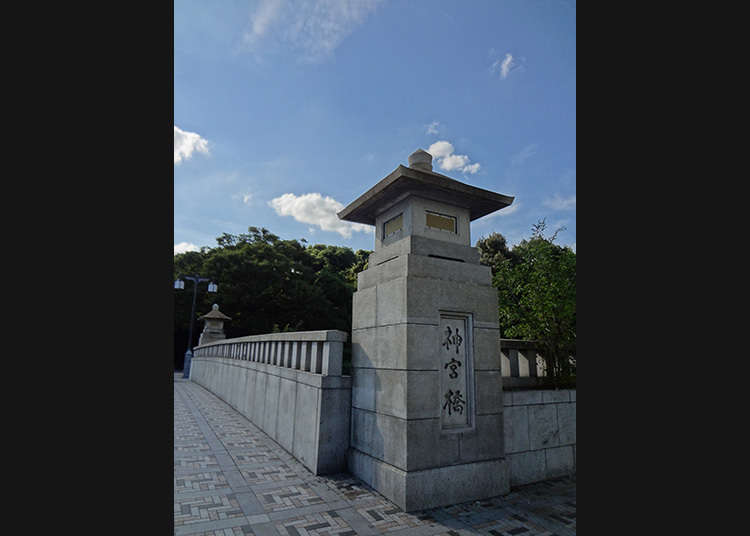
Cross the large Jingu-bashi when going from Harajuku station to Meiji Shrine. There are pillars with large lanterns at each side of the bridge, suitable for the entrance to the solemn shrine. You can experience a fantastic atmosphere when the lights are lit at night.
Purify Yourself with Pebbles
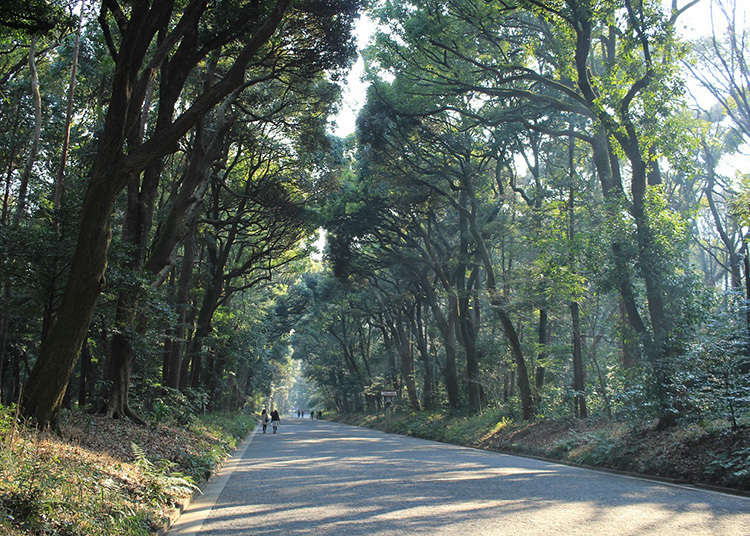
There are three ways to enter the shrine. You could come from the south via JR Harajuku Station and the Meijijingu-mae Subway Station to cross Jingu-bashi, from the north via JR Yoyogi Station or from the west from Sangubashi Station on the Odakyu line. The ground of all three ways are ways are covered with pebbles. These pebbles are called "tamajari" and are essential for a holy shrine. They will purify the body and mind while walking on them, but be careful to walk on the side of the pathway. The center is reserved for kami, the Shinto deities.
The largest Torii (Traditional Japanese Gate) in Japan

A large torii is located at the entrance, standing at 12 meters high, 17.1 meters wide, and 1.2 meters in diameter, where the paths leading from the south and the north intersect. It was built from a cypress over 1,500 years old, found on a mountain 3,300 meters above sea level. This Myojin-torii is the largest wooden torii in Japan.
Alcohol Offered to the Kami
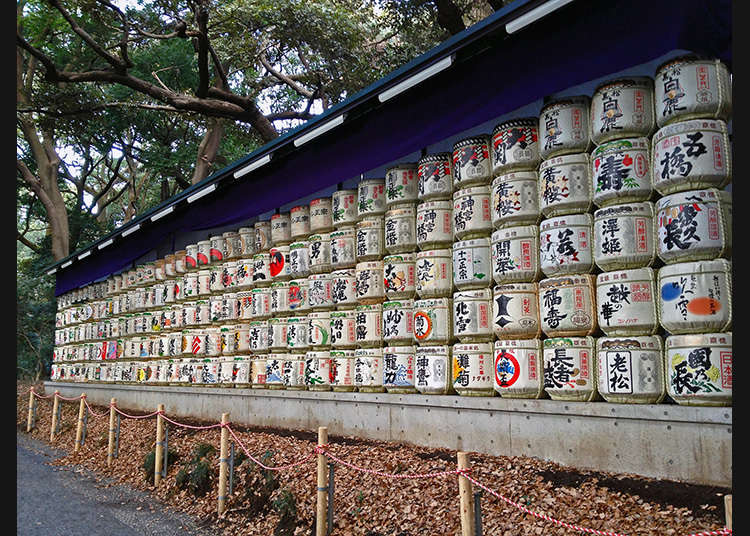
Walking along the walkway, you will find many sake (Japanese rice wine) casks displayed at the side. Shinto has a custom of dedicating sake to the kami, and these casks are from breweries all over Japan, offered to the kami of Meiji Shrine. There are even casks from France with Burgundy wine inside.
Go to the Honden (Main Shrine Building) where the Kami Reside
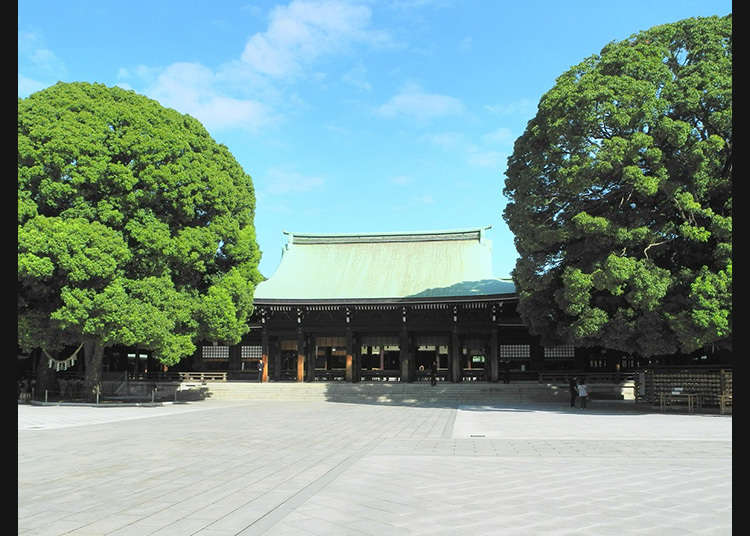
You will arrive at the honden after walking for around 15 minutes along the walkway. There is an area for you to wash your hands and mouth outside called chozuya, so please do so before worshipping. You might want to take a photo here, but keep in mind that this is a spiritual place so try not to make too much noise.
Lucky Wedding Ceremonies
Many wedding ceremonies are performed at shrines in Japan. You may be able to witness a wedding at Meiji Shrine if you are lucky! A person serving the kami of this shrine will lead the procession with the bride and the groom to see this kami. It is said that people who witness this scene will also become happy.
-

-
Address
1-1, Yoyogikamizonocho, Shibuya-ku, Tokyo, 151-8557
View Map -
Nearest Station
Sangubashi Station (Odakyu Odawara Line)
- Phone Number 03-3379-5511
-
Address
1-1, Yoyogikamizonocho, Shibuya-ku, Tokyo, 151-8557
-
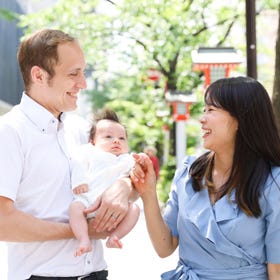 Personal Photographer~ Meiji Shrine Tokyo~Personal Photographer~ Meiji Shrine Tokyo~
Personal Photographer~ Meiji Shrine Tokyo~Personal Photographer~ Meiji Shrine Tokyo~-
Address
1-11-8 Sakuragaoka, Setagaya-ku, Tokyo, 156-0054
-
Nearest Station
Kyodo Station (Odakyu Odawara Line)
- Phone Number 090-9371-4499
-
Address
1-11-8 Sakuragaoka, Setagaya-ku, Tokyo, 156-0054
- Area
- Category
*Prices and options mentioned are subject to change.
*Unless stated otherwise, all prices include tax.
Popular Tours & Activitiess
Recommended places for you
-
Ad
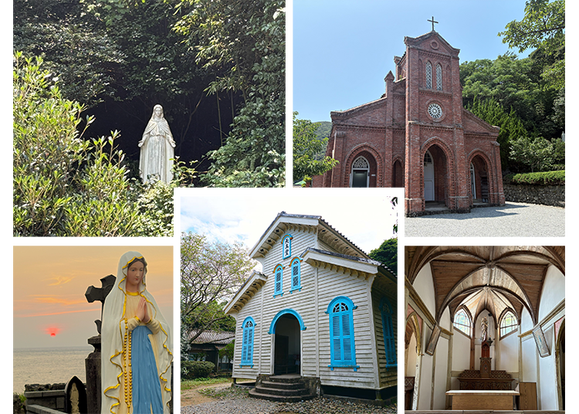
Unraveling the History of the Hidden Christians from Goto City, Nagasaki Prefecture, located in Kyushu
by: Yohei Kato
-

The Ultimate Guide to Mitsui Outlet Parks in Japan (2025 Edition) - Popular Tax-Free Malls & Coupon Info for Travelers
by: Guest Contributor
-

Fine Dining on Rails? Japan Announces Stunning NEW 'Laview' Restaurant Train
-
Ad

Get Your Perfect Custom Suit at GINZA Global Style PREMIUM Ginza Honten: Choose from 5,000 Fabrics, Starting at 26,400 Yen (incl. tax)!
-
Ad

Okinawa Travel Troubles? Guide to the MCC Hotline for Illness and Weather Emergencies
-
Ad

Just 2 Hours from Tokyo! Enjoy Ibaraki’s Breathtaking Ocean Views, Flowers & Autumn Leaves on Private Tours
Inspiration for Accommodations
-

Enjoy Mt. Fuji from the Comfort of Your Room! Recommended Ryokan with Mt. Fuji View
-

Stay Near the Cherry Blossoms! Hotels for Cherry Blossom Viewing in Tokyo
-

Family-Friendly Hotels with Free Shuttle to Disneyland: Convenient Access for a Magical Stay
-

Top Ranked Hakone Hotels with Mt. Fuji View: Enjoy Stunning Scenery from Your Private Space
-

Convenient Tokyo Hotels with Airport Shuttle: Ideal for Families and Heavy Luggage
-

Stunning Tokyo Tower View Hotels: Enjoy Spectacular Scenery from Your Private Space
-

Convenient Asakusa Hotels with Kitchens: Ideal for Extended Family Visits
-

Experience Luxury: Hakone's 10 Best Five-Star Accommodations
-

Enjoy Mt. Fuji Autumn Leaves! Top Hotels Near the Popular Autumn Leaves Corridor
-

Experience Hakone Fall Foliage from Your Room with Stunning Views
-

16 Secrets About Mt. Fuji, the Symbol of Japan: Even Japanese People Don’t Know That?!
-

Sumida River Walk and Tokyo Mizumachi: Eastern Tokyo’s Coolest New Shopping Complex!
by: Timothy Sullivan
-

Visiting Shibuya and Asakusa - Two Popular Areas of Tokyo That Are Complete Opposites!
-

Touring Tokyo's Asakusa Area with Kids: Essential Guide, Tips & Recommended Food Spots!
-

Shibuya Crossing: Getting the Best View from the Deck at Magnet by Shibuya109!
-

Tokyo Roppongi|Roppongi Station Area Map & Sightseeing Information
- #best ramen tokyo
- #what to buy in ameyoko
- #what to bring to japan
- #new years in tokyo
- #best izakaya shinjuku
- #things to do tokyo
- #japanese nail trends
- #what to do in odaiba
- #onsen tattoo friendly tokyo
- #daiso
- #best sushi ginza
- #japanese convenience store snacks
- #best yakiniku shibuya
- #japanese fashion culture
- #best japanese soft drinks



















